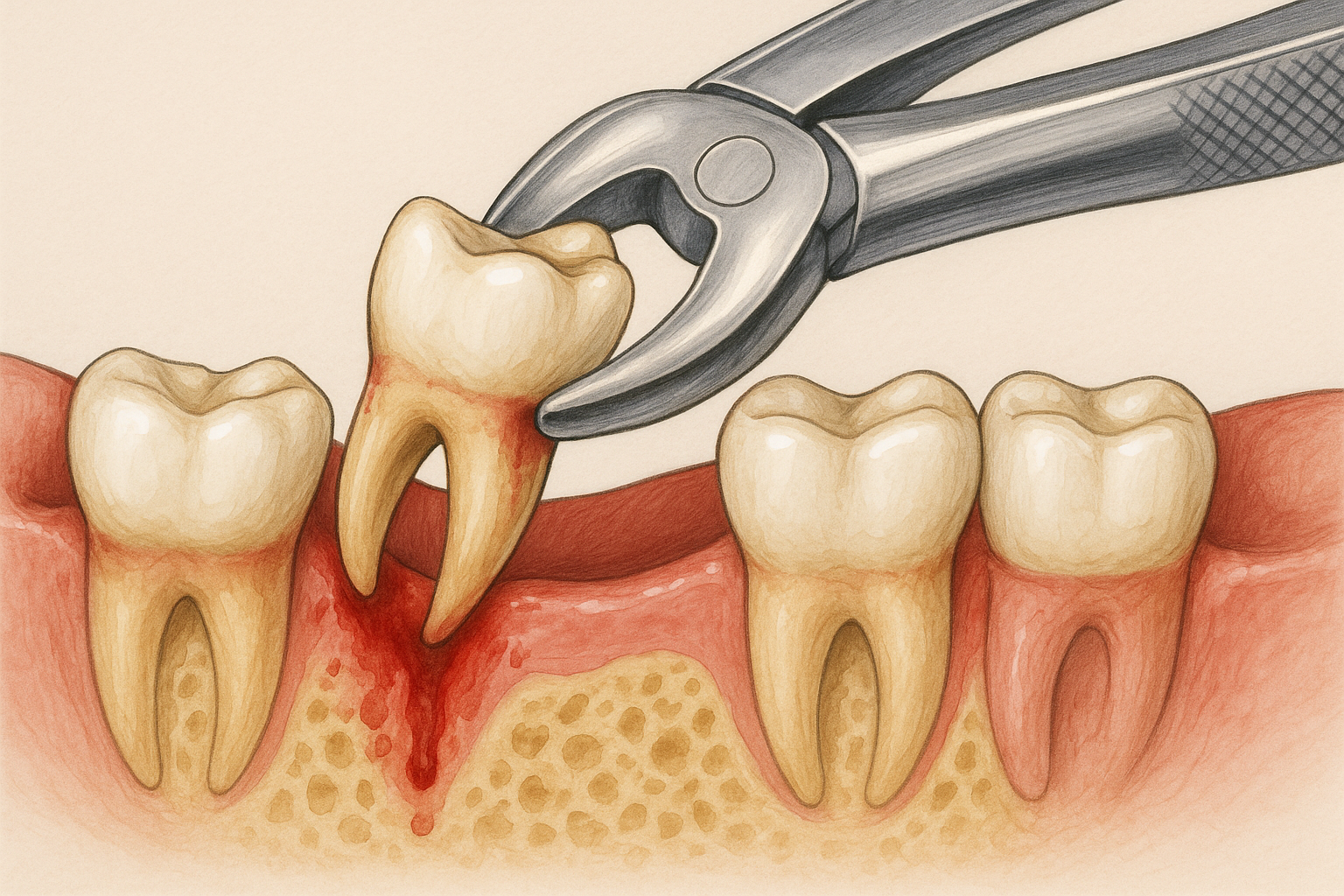
When Does a Tooth Need to Be Removed?
| Reason | Description |
|---|---|
| 🦠 Severe Decay | Tooth damaged beyond repair or root canal |
| 💥 Fracture | Tooth broken during accident or injury |
| 🦷 Impacted Wisdom Tooth | Pain, swelling, or misaligned growth |
| 🦷 Orthodontic Need | For space correction in crowded teeth |
| 🦠 Infection or Abscess | Spreading pain and swelling |
| ⚠️ Mobile Tooth | Loosened due to gum disease or trauma |
The goal is always to save the tooth first, but sometimes extraction is the best option to stop pain and prevent complications.
Types of Extractions We Perform
- • Simple Extraction: Visible, fully-erupted tooth removed with minimal force
- • Surgical Extraction: For impacted, broken, or half-erupted teeth (e.g. wisdom teeth)
- • Wisdom Tooth Removal: Third molar removal with flap surgery if necessary
- • Multiple Extractions: For full-mouth rehab or orthodontic prep
How We Ensure a Pain-Free Experience.
- Local anesthesia or gel numbing for complete comfort
- Gentle tissue handling to avoid trauma
- Single-use sterilized instruments
- Antibiotics and painkillers prescribed post-op
- Patient monitoring throughout the procedure
Aftercare & Recovery Tips
| Care Point | Tip |
|---|---|
| 🧊 Ice Pack | Apply for 15 min intervals to reduce swelling |
| 🧴 Avoid Rinsing | No mouthwash or spitting for 24 hrs |
| 🍲 Eat Soft Foods | Khichdi, yogurt, smoothies for 2–3 days |
| ❌ No Smoking/Straws | Avoid suction to prevent dry socket |
| 💊 Take Meds | Painkillers & antibiotics as directed |
FAQs.
Not at all. We use anesthesia and modern techniques to make it painless.
Most patients feel normal in 2–3 days. Wisdom teeth may take 5–7 days.
For simple extractions — yes. For surgical cases, rest for 1–2 days is ideal.